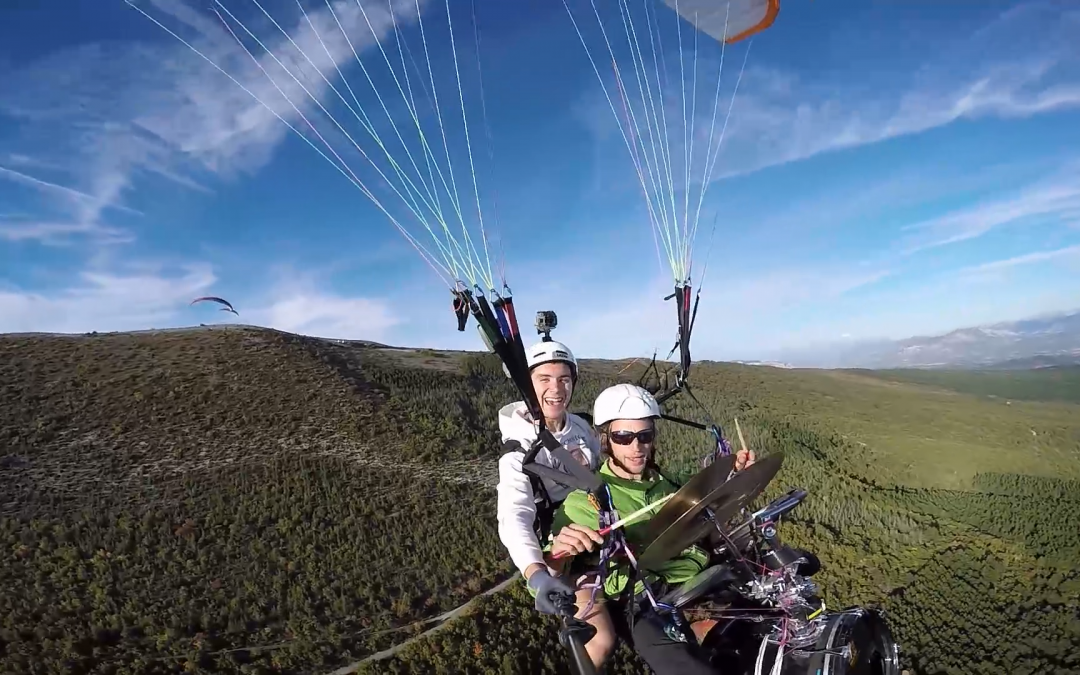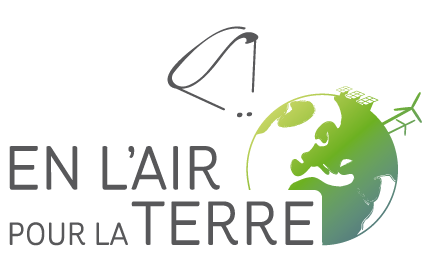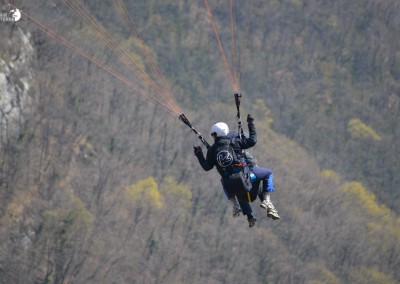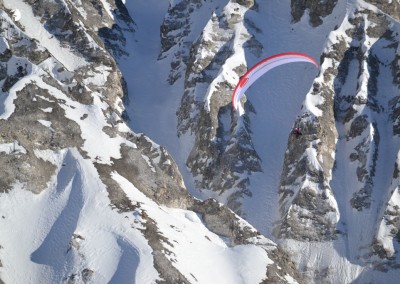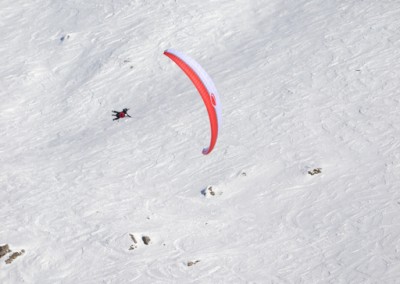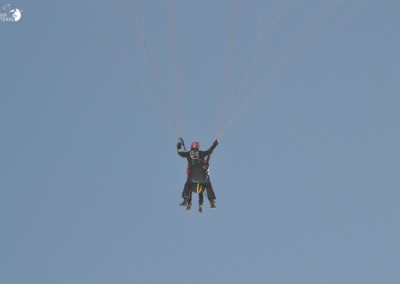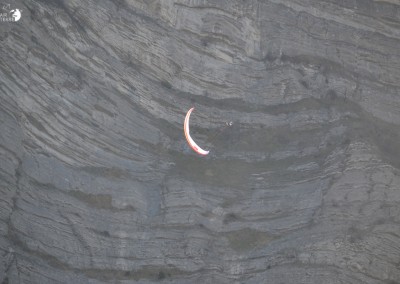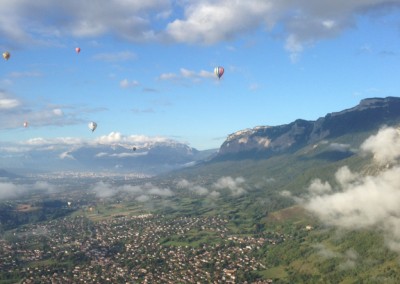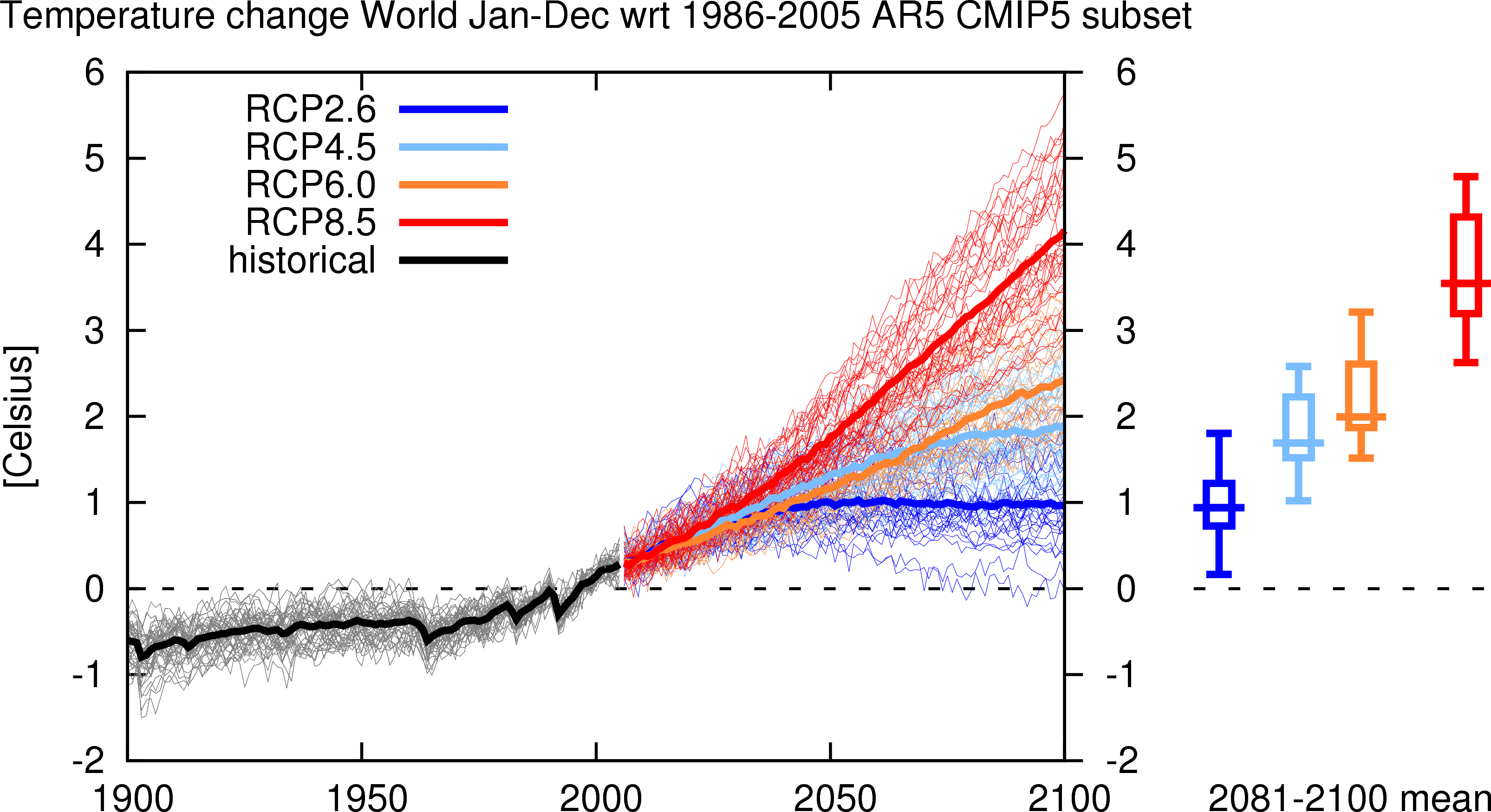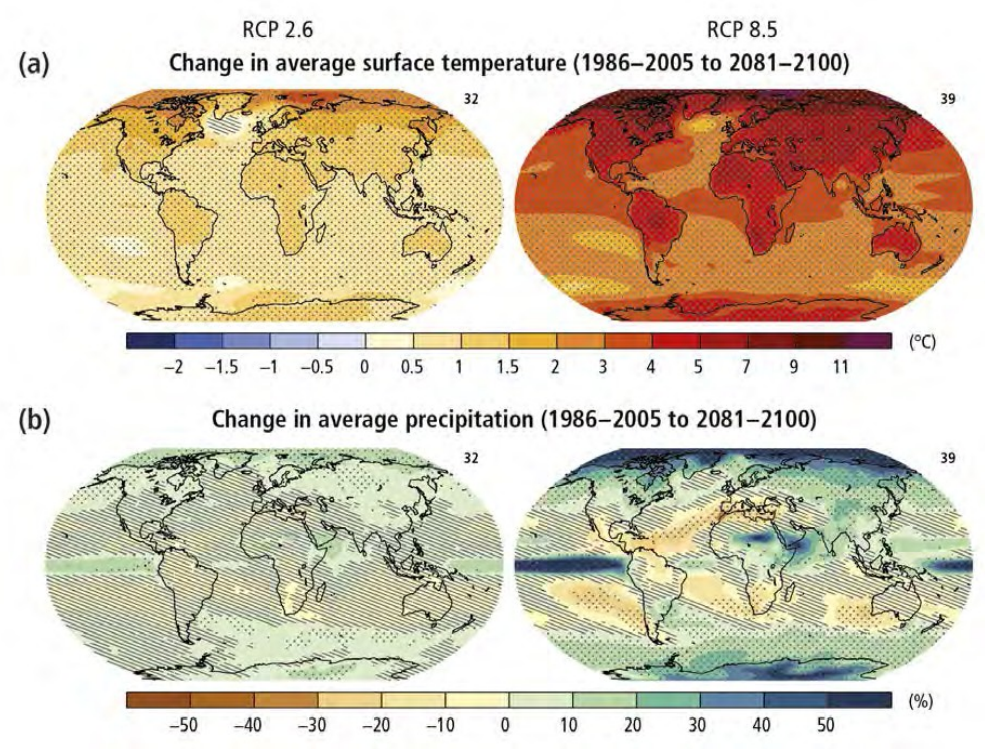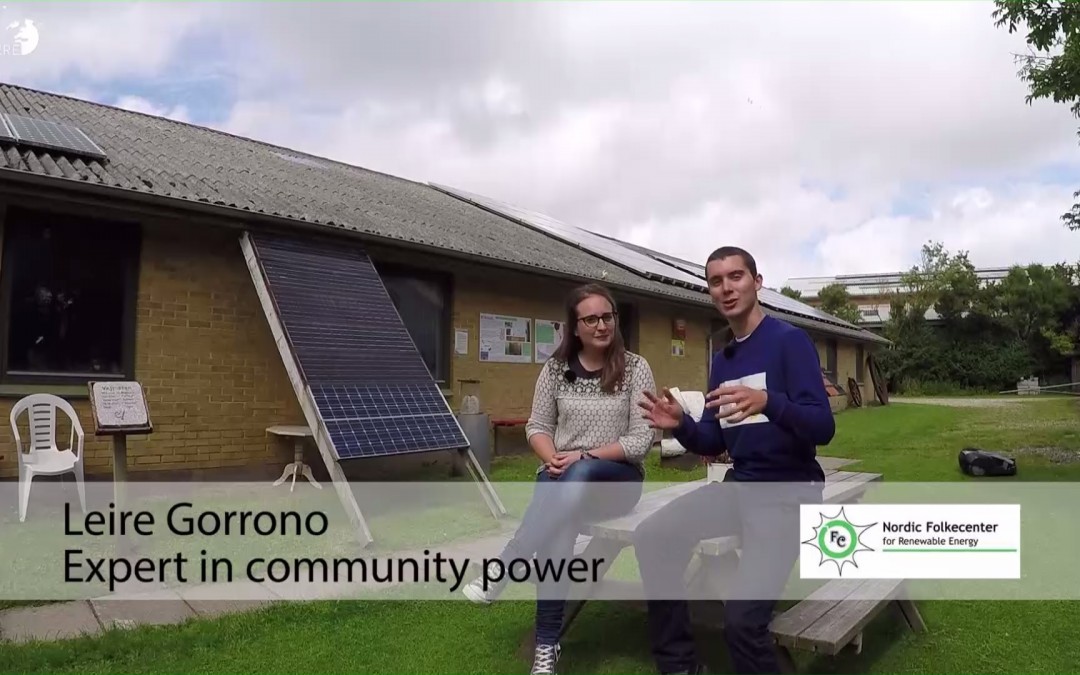Paragliding equipment!
The two-seater
To choose our material, we tried several sails and harnesses to be sure to have everything need us for the 60-day Tour of Europe.
Needed us equipment that is at the same time light and easy to use to be sure to be able to fly anywhere in Europe, in different conditions and on all sites visited.
The two-seater sail
First for sailing in tandem, we wanted a sail that is both resilient (use on enough natural takeoffs see little bad: D), easy to fly, take off and land all by being playful in flight because you still have fun!
After different tests one really was conquered by the BiGolden 3 in size 39 which is for us THE ultimate toy for fun!
We chose in size 39 m² color Lime and tried to Sky Dreams, the Gradient France importer.
How do say you? It is just amazing how this sail is handy and pleasant thermal flight or for fun in the air. We have the impression of having a solo sail in command and it's super nice. It flies quickly, swells great with or without wind! In short we found the perfect tool for all our interview and our flights in the Alps, but also anywhere in Europe!
In addition weight level, it is only 6.9 kg, ideal for all hiking flights!
We also tried the light which is really amazing with a still easier launch even by wind ass and a lightness to the worthy of a very good solo wing command!
We have chosen the normal to be able to get the head in the air without fear for the wing and what a joy! It passes all the figures perfectly and is also perfect for the flight as it flies fast!

Tandem harness
For the harness we have 2 Kortel Karver 2:
- the one equipped with the Sak II, who works for the Solo and the two-seat passenger (tip that let's describe you)
- the other with the module very convenient and equipped a Kortel Krisis Ultra Light tandem two-seater. We're not far from being at the top level weight while having some solid gear for the adventure!
These harnesses are really great for the tandem for the pilot and the passenger.
For the passenger, it:
- Is really free to move with the Karver II without the straps
- A very good passive safety with the airbag with the Sak II
- There is a large pocket on the back of the Sak II, ideal to store all the material taken
- Light equipment, perfect if there is waiting for takeoff
For the driver:
- Presence of braces because of the weight of the reserve parachute
- There still a very comfortable harness for flights of distances (used solo with the Sak II for 2 flights of 150 km of more than 7 hours)
- Good protection foam under the buttocks
- A pocket to store various accessories
A big plus also are two bags of portage for flights rando / camping:
- The Sak II is a true portage bag to put all the harnesses, reserve, helmets, clothing, and other accessories
- The Kolibri Sak is ideal to put the two-seater veil while still having room to add other things! In addition it is very light and adds very little weight and more and it's really nice for the big drops!
For our flights / hiking we were in the following configuration:
- In the Sak Kolibri worn by Nicolas: BiGolden 3 Gradient in size 39 + harness driver Karver II with tandem module + parachute to help Kortel Krisis Ultra Light Tandem
- In the Sak II worn by Navy: Karver II + helmets + clothing + picnic + other accessories
With that, all the mountains available to us! 😀
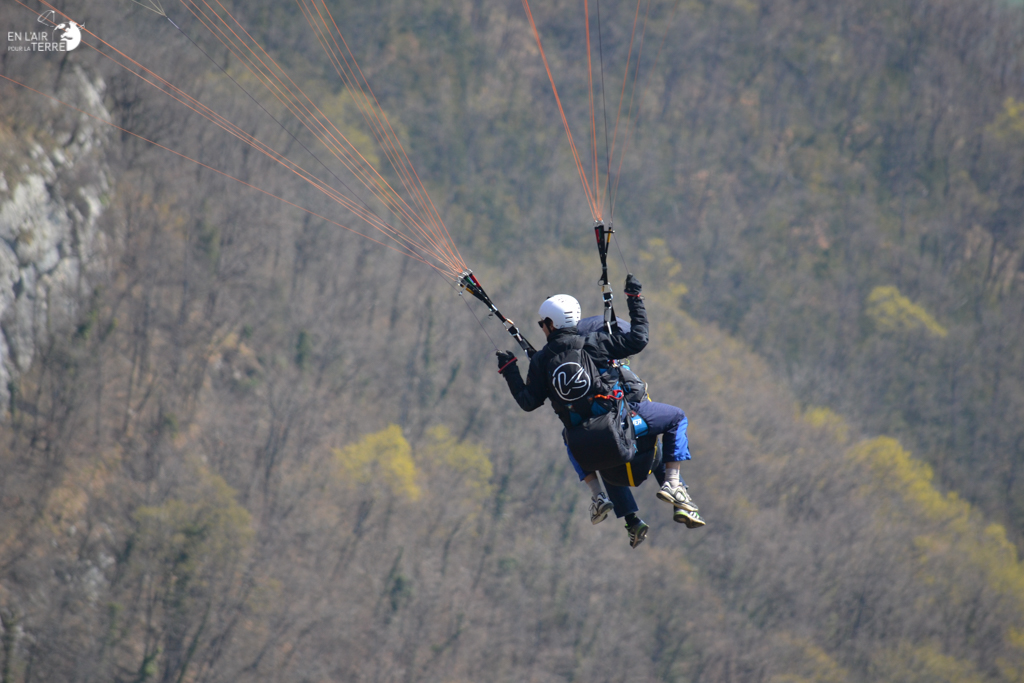

For solo acrobatics
For training to be safe under the tandem in all conditions, then nothing better than learning from the reactions of the wing off flight! And then the sensations are incredible! 🙂
After several attempts to sail there also we found the ideal freestyle sail for our activity: the new freestyle 3 gradient in 20!
It's just perfect as first wing to learn dynamic and negative maneuvers and start acro:
- A stall on several centimeters to learn the choppers, twisters etc.
- Very playful dynamic manoeuvres for the wings over 36 asymmetrical, inversion, SAT, SAT asymmetrical, rhythmic
- A shoot much less violent than the previous freestyles
- Ideal for the waggas in close flight
- Also perfect for get in the thermal and chain runs
- Of long perfect trims for the soaring
- Take off very easy ass wind (especially for Saint Hilaire of touvet in late afternoon to enjoy the sunset)
A beautiful veil that allows progress in safety, learning all the manoeuvres serenely or simply to have fun in flight of proximity and strong wind!
Sailing freestyle 3 in 20 we have is the black and red in this picture, with an another freestyle 3 in 20 "cold rainbow" colors in the background.
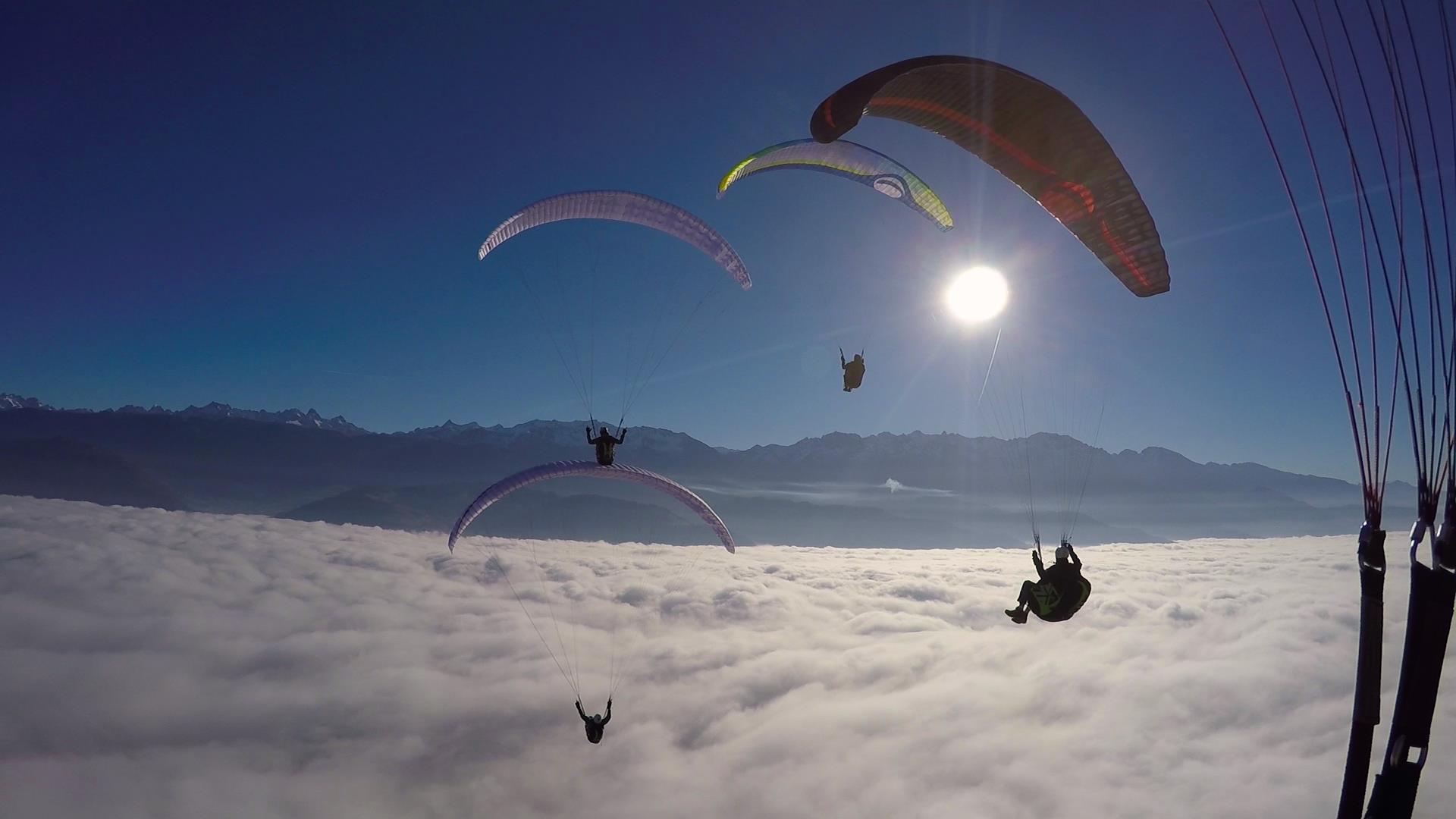
For the flight of Distance and flight / camp / hike
For the distance flight and/or flight rando/camping, needed us THE appropriate harness IE
- (Very) light
- Resistant
- Comfortable
- A good passive safety
After the trial of several harness it to here also decided to take a fifth Kortel Hummingbird in size L (170-185cm) that weighs all equipped only 2kg.
This stool is perfect for the use we want to make IE
- Be able to go to any Summit so cross with a good market approach and the elevation
- Be comfortable for long flights in cross!
- If we're ever cross cow, can easily go back and take off again in order to continue to enjoy the day
- Have a foam bag and good security in the event of impact
- A resistant harness for take-offs in the mountains or in the great outdoors

For any questions or requests for information, feel free to write to us by contacting us directly below. We'll be very happy to answer all your questions! 😀
